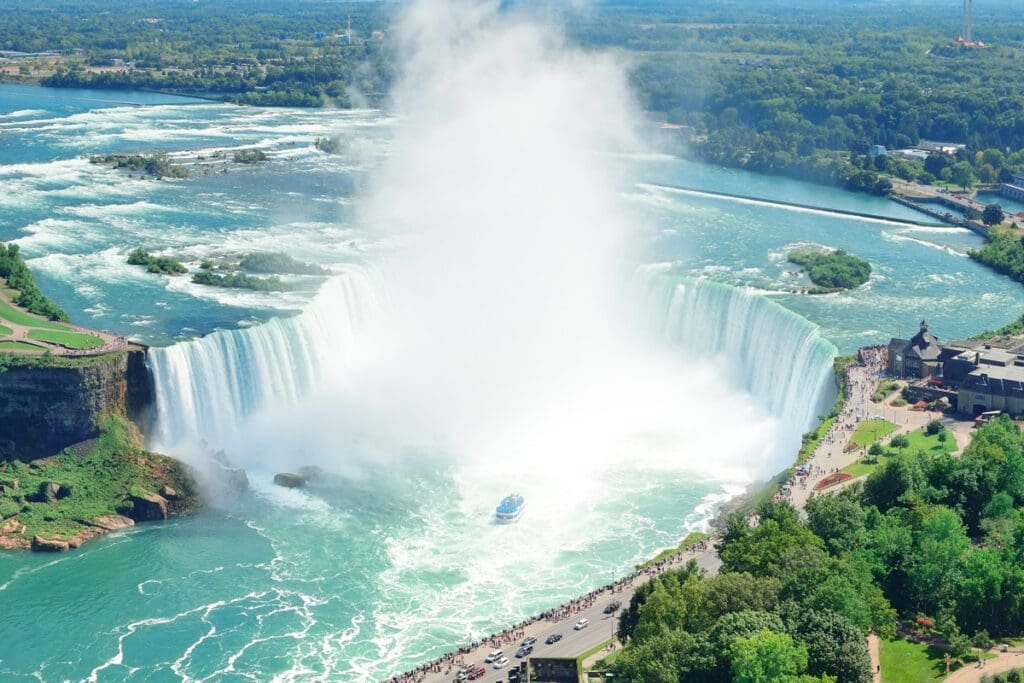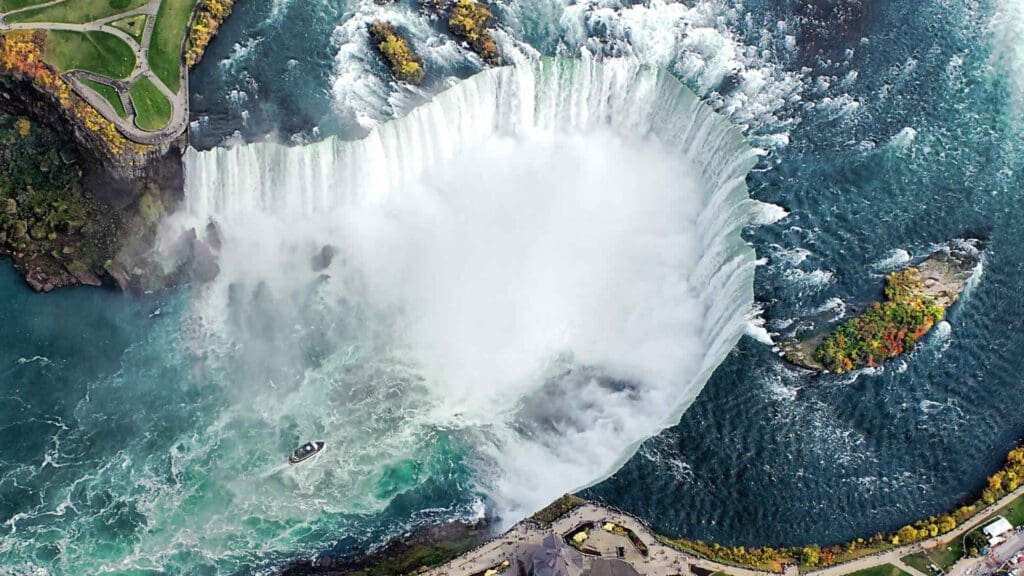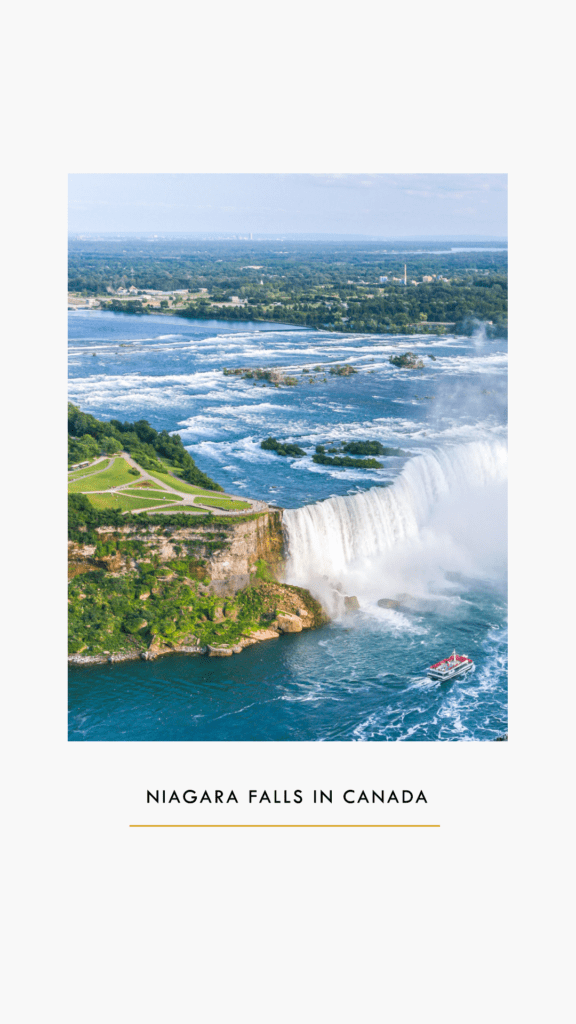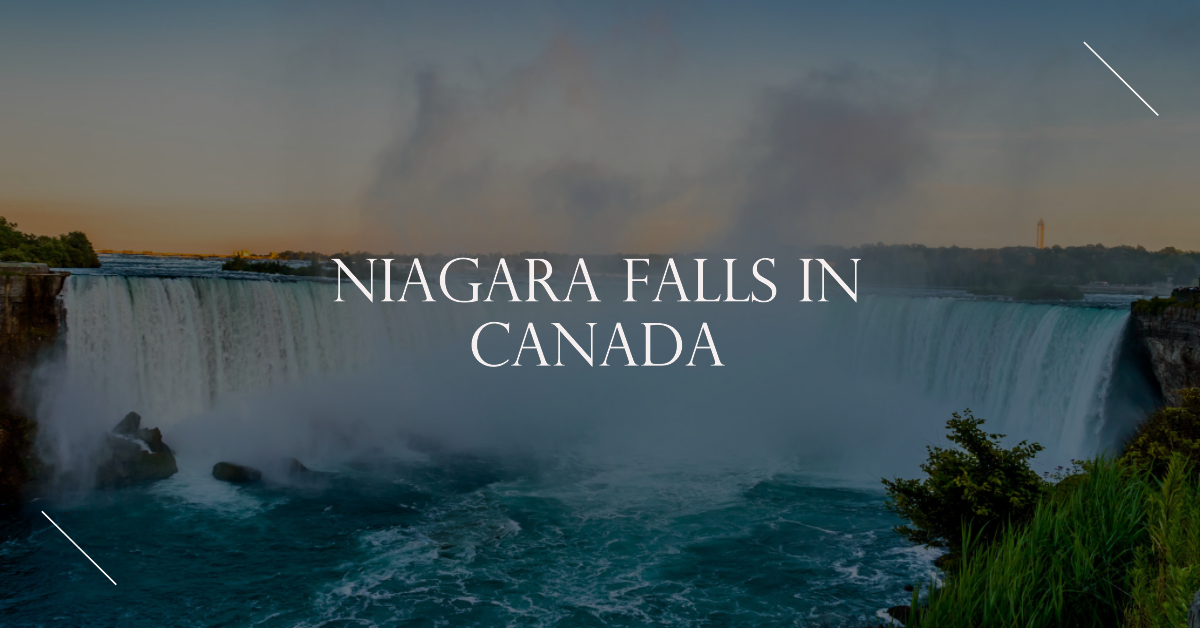Where Is Niagara Falls In Canada
Niagara Falls is situated in the province of Ontario, Canada, along the Niagara River. The river serves as the boundary between Ontario, Canada, and New York, USA. The Canadian side of Niagara Falls is specifically located in the city of Niagara Falls, Ontario. This city can be found approximately 130 kilometres southwest of Toronto. The falls themselves are a magnificent natural wonder formed by the flow of water from Lake Erie to Lake Ontario.
The Canadian side of Niagara Falls is situated in the city of Niagara Falls, Ontario. This city is a popular tourist destination and offers stunning views of the falls from various vantage points. It is approximately 130 kilometres (80 miles) southwest of Toronto, making it easily accessible for visitors.
The falls themselves consist of three main sections: the Horseshoe Falls, the American Falls, and the Bridal Veil Falls. The Horseshoe Falls, named for its distinctive shape, is the largest and most impressive section. It is located mainly on the Canadian side of the border, but a small portion also extends into the United States. The American Falls and Bridal Veil Falls are primarily on the U.S. side.
Visitors to Niagara Falls can enjoy a range of activities and attractions. Boat tours, such as the famous Maid of the Mist, take visitors up close to the falls for a breathtaking experience. There are also observation decks, walking trails, and scenic viewpoints that offer panoramic views of the falls and the surrounding area.
Overall, Niagara Falls in Canada is a magnificent destination that captivates visitors with its awe-inspiring beauty and offers a wide range of experiences for all who visit.
How was Niagara Falls formed?
The formation of Niagara Falls dates back thousands of years to the end of the last Ice Age. The falls were created by a combination of geological processes and the erosive power of water.
Around 12,000 years ago, as the glaciers that covered the region began to melt, the Niagara River was formed. This river served as a natural drainage system for the melting ice from the Great Lakes Basin. As the water flowed from Lake Erie to Lake Ontario, it encountered a significant difference in elevation. This elevation drop, known as the Niagara Escarpment, created a natural setting for the formation of waterfalls.
Over time, the erosive force of the flowing water carved through layers of soft rock, such as shale and limestone, while the more resistant layers of dolomite and sandstone formed the protective caprock. This differential erosion between the layers created the distinctive vertical drop of Niagara Falls.
The falls are composed of three main sections: the Horseshoe Falls, the American Falls, and the Bridal Veil Falls. The Horseshoe Falls, with its iconic curved shape, is the largest and most powerful section. It stretches approximately 670 meters (2,200 feet) across the Canadian side, with a vertical drop of about 57 meters (188 feet). The American Falls and Bridal Veil Falls are narrower but still impressive in their own right.
The constant flow of water over the falls contributes to their ongoing formation. The powerful cascade causes the underlying bedrock to erode and gradually retreat upstream. Over time, the falls will continue to recede, albeit at a very slow rate.

Activities at Niagara Falls
Hiking Trails
There are many hiking and biking trails in Niagara Falls, where you can enjoy the natural beauty of the area.
Relax at a spa
There are several spas in Niagara Falls, where you can relax and rejuvenate after a long day of sightseeing.
Go behind the falls
Journey Behind the Falls is a tour that takes you behind Horseshoe Falls. You’ll get soaked, but it’s a fantastic experience.
Skylon Tower
The Skylon Tower is a 520-foot-tall tower with an observation deck that offers stunning views of Niagara Falls. You can also dine at the revolving restaurant at the top of the tower.

FAQ:
Can you go behind Niagara Falls?
There used to be a natural cave called the “Cave of the Winds” behind Bridal Veil Falls, but it collapsed in 1954. However, on the Canadian side, there is a tunnel known as the “Journey Behind the Falls” that allows visitors to view the falls from behind through observation decks and portals.
Can you walk from the US side to the Canadian side of Niagara Falls?
There is no pedestrian bridge connecting the US and Canadian sides of Niagara Falls directly. To cross the border, you would need to use the appropriate border crossing points, such as the Rainbow Bridge or the Whirlpool Rapids Bridge.
How tall are Niagara Falls?
The height of Niagara Falls varies depending on the section. The Horseshoe Falls, which is the largest section and located mainly on the Canadian side, has a vertical drop of about 57 meters (188 feet). The American Falls has a drop of approximately 21 meters (70 feet), and the Bridal Veil Falls has a drop of about 24 meters (80 feet).
When is the best time to visit Niagara Falls?
Niagara Falls can be visited year-round, and each season offers a different experience. The summer months (June to August) tend to be the busiest with pleasant weather. Spring and fall offer milder temperatures and fewer crowds. Winter can be cold, but it provides a unique frozen landscape and opportunities for ice formations.
Is there an entrance fee to visit Niagara Falls?
Niagara Falls State Park, on the US side, charges a fee for parking and access to certain areas of the park. On the Canadian side, there is no fee to view the falls from public areas, but there may be parking fees in some locations.
Niagara Falls Statistics
| Niagara falls statistics | |
| Water Source | Great lakes: Lake Superior, Lake Michigan Lake Huron and Lake Erie |
| Total height | 167 ft (51 m) |
| Number of drops | 3 |
| Average flow rate | 85,000 cu ft/s (2,400 m3/s) |
| Whirlpool Rapids | 518 m (1,700 ft) long; (1,200 ft) wide; 38 m (125 ft) depths |
| Rapids speed above the Falls | 40 km/hr or 25 mph |


